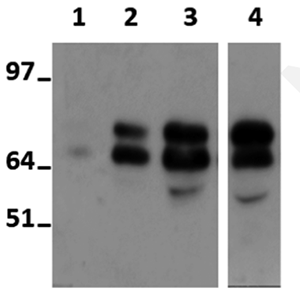Protein S on the surface of plasma lipoproteins: a potential mechanism for protein S delivery to the atherosclerotic plaques?

Published: October 17 2022
Abstract Views: 2052
PDF: 197
Publisher's note
All claims expressed in this article are solely those of the authors and do not necessarily represent those of their affiliated organizations, or those of the publisher, the editors and the reviewers. Any product that may be evaluated in this article or claim that may be made by its manufacturer is not guaranteed or endorsed by the publisher.
All claims expressed in this article are solely those of the authors and do not necessarily represent those of their affiliated organizations, or those of the publisher, the editors and the reviewers. Any product that may be evaluated in this article or claim that may be made by its manufacturer is not guaranteed or endorsed by the publisher.
Similar Articles
- Ottavia Borghese, Claudio Vincenzoni, Commentary on “Preventive percutaneous coronary intervention versus optimal medical therapy alone for the treatment of vulnerable atherosclerotic coronary plaques (PREVENT): a multicenter, open-label, randomized controlled trial” , Bleeding, Thrombosis and Vascular Biology: Vol. 3 No. 2 (2024)
- Daniela Tormene, Elena Campello, Chiara Simion, Anna Poretto, Paolo Prandoni, Paolo Simioni, Combined oral contraceptives and the risk of venous thromboembolism carriers of antithrombin, protein C or S deficiency: Sub-analysis of a prospective cohort study , Bleeding, Thrombosis and Vascular Biology: Vol. 1 No. 3 (2022)
- Marwa Eltemamy, Robert Namushi, Narayanamoorthi Saravanan, Importance of assessment of carotid plaques in the managementof acute ischemic stroke: floating intracarotid plaque , Bleeding, Thrombosis and Vascular Biology: Vol. 2 No. 3 (2023)
- Federica Mancazzo, Antonia Vitulli, Lavinia Dirienzo, Concetta T. Ammollo, Fabrizio Semeraro, Mario Colucci, Influence of emicizumab on protein C-mediated clotting regulation , Bleeding, Thrombosis and Vascular Biology: Vol. 2 No. 4 (2023)
- Stefano Lancellotti, Monica Sacco, Maira Tardugno, Antonietta Ferretti, Raimondo De Cristofaro, The von Willebrand factor-ADAMTS-13 axis: a two-faced Janus in bleeding and thrombosis , Bleeding, Thrombosis and Vascular Biology: Vol. 1 No. 1 (2022)
- Boris Shenkman, Ivan Budnik, Yulia Einav, Interaction between adenosine diphosphate receptors and protein-kinase C isoforms in platelet adhesion under flow condition , Bleeding, Thrombosis and Vascular Biology: Vol. 2 No. 1 (2023)
- Robert Parambi, Nicole Ziliotto, Francesco Bernardi , Marcello Baroni , Richard W Browne , Dejan Jakimovski, Bianca Weinstock-Guttman, Robert Zivadinov, Murali Ramanathan, Crosstalk between hemostasis inhibitors and cholesterol biomarkers in multiple sclerosis , Bleeding, Thrombosis and Vascular Biology: Vol. 1 No. 3 (2022)
- Jingnan Huang, Delia I. Fernández, Jinmi Zou, Xueqing Wang, Johan W.M. Heemskerk, Ángel García, Restrained glycoprotein VI-induced platelet signaling by tyrosine protein phosphatases independent of phospholipase Cγ2 , Bleeding, Thrombosis and Vascular Biology: Vol. 2 No. 3 (2023)
- Maria J. Fernandez Turizo, Rushad Patell, Jeffrey I. Zwicker, Identifying novel biomarkers using proteomics to predict cancer-associated thrombosis , Bleeding, Thrombosis and Vascular Biology: Vol. 3 No. s1 (2024): 12th ICTHIC
- Marco Cattaneo, Claudia Ghali, Mariangela Scavone, ReDIP, the Italian network for the diagnosis of congenital platelet function disorders , Bleeding, Thrombosis and Vascular Biology: Vol. 3 No. 1 (2024)
You may also start an advanced similarity search for this article.











